Welcome to the Generac 22kW Installation Manual, your comprehensive guide to safely and effectively installing your generator. This manual is designed for homeowners, technicians, and installers, providing detailed instructions and safety protocols to ensure proper setup and operation. Follow the steps carefully to maximize performance, efficiency, and reliability of your Generac 22kW generator system. Always prioritize safety and adhere to local regulations.
1.1 Purpose of the Manual
This manual serves as a detailed guide for installing, operating, and maintaining the Generac 22kW generator. Its primary purpose is to ensure a safe and successful installation process by providing step-by-step instructions, safety precautions, and technical specifications. The manual also outlines essential guidelines for compliance with local building codes and regulations. By following the instructions carefully, users can achieve optimal performance, reliability, and longevity of their generator system. Additionally, it provides troubleshooting tips to address common issues, ensuring smooth operation and minimizing downtime.
1.2 Scope of the Installation Process

The installation process for the Generac 22kW generator involves a series of structured steps to ensure proper setup and functionality. This includes site preparation, electrical and fuel system connections, and final testing. The process requires adherence to technical specifications, safety protocols, and local regulations. While the manual provides detailed guidance, it assumes the installer possesses necessary technical knowledge. The scope covers all physical and procedural aspects of installation, ensuring a seamless integration of the generator into the electrical and fuel infrastructure of the property.
1.3 Safety Precautions and Warnings
Adhering to safety precautions is critical during the installation of the Generac 22kW generator. Always wear protective gear, including gloves and safety glasses. Ensure the generator is installed in a well-ventilated, outdoor location to prevent carbon monoxide hazards. Never work on live electrical circuits without proper shutdown and locking mechanisms. Follow all local and national electrical codes to avoid risks of fire or electrical shock. Properly ground the system to ensure safe operation. Failure to comply with these precautions may result in serious injury or damage.
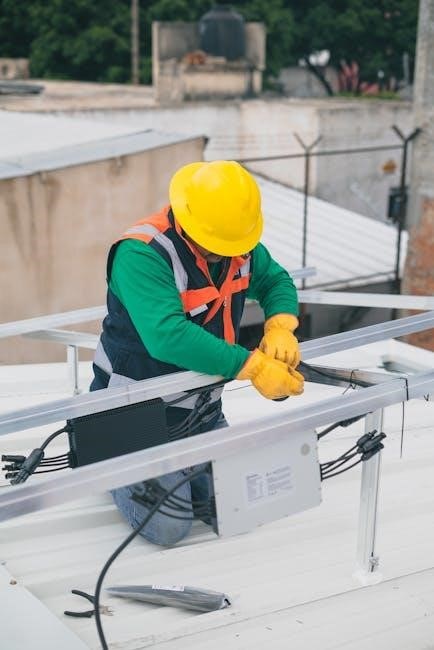
Pre-Installation Requirements
Ensure load assessment, space planning, and compatibility checks are completed. Verify all necessary components and tools are available for a smooth installation process.
2.1 System Compatibility and Load Calculation
Verify the Generac 22kW generator is compatible with your electrical system, including voltage, phase, and frequency requirements. Conduct a detailed load calculation to determine the total power demand of your home or business. List all essential appliances and systems, such as lighting, HVAC, and critical circuits. Consider both running and starting watts for accurate sizing. Ensure the generator’s capacity matches or exceeds the calculated load to avoid undersizing. Consult a licensed electrician if unsure about calculations or compatibility.
2.2 Site Preparation and Space Allocation
Prepare the installation site by clearing debris and ensuring a level surface. Allocate sufficient space for the generator, considering ventilation and maintenance access. The unit must be placed on a sturdy, non-combustible base, such as a concrete pad. Ensure proper drainage to prevent water accumulation. Maintain a minimum distance of 18 inches from windows, doors, and combustible materials. Verify local regulations for specific spacing requirements. Plan for easy access to fuel lines and electrical connections to simplify future maintenance and inspections.
2.3 Local Building Codes and Permits
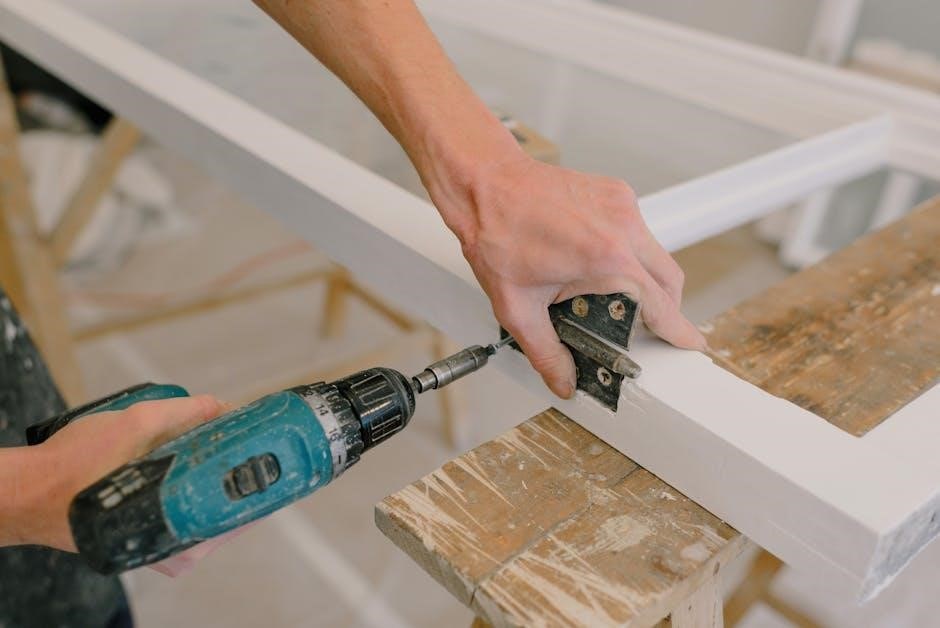
Ensure compliance with local building codes and regulations for the Generac 22kW generator installation. Obtain all necessary permits before commencing work. Verify requirements for electrical, plumbing, and zoning permits. Adhere to local ordinances regarding generator placement and noise levels. A licensed professional should handle permit applications and inspections. Keep all documentation accessible for future reference. Failure to comply may result in legal consequences or system non-approval. Always follow regional guidelines to ensure a safe and lawful installation.

Location Selection and Installation Environment
Proper location selection is critical for safe and efficient operation. Ensure good airflow, accessibility, and drainage. Consider noise levels and proximity to living areas. Comply with local regulations regarding generator placement and environmental impact. Choose a stable, level surface to ensure proper installation and functionality. Always prioritize safety and accessibility for maintenance and repairs.
3.1 Choosing the Right Location for the Generator
When selecting a location for your Generac 22kW generator, ensure it is well-ventilated and away from windows, doors, and living spaces to prevent carbon monoxide risks. Choose a flat, stable surface that is not prone to water accumulation. Avoid areas near flammable materials or where moisture could compromise the system. Maintain a minimum distance of 18 inches from walls and fences for proper airflow and maintenance access. Ensure the location is easily accessible for routine inspections and repairs.
3.2 Environmental Considerations (Weather, Noise, Ventilation)
Ensure the generator is installed in an area protected from direct weather exposure, such as rain, snow, or extreme sunlight. Generators produce noise, so position it away from living areas or neighbors to minimize disturbances. Proper ventilation is critical to prevent carbon monoxide buildup and ensure efficient operation. Install in a well-ventilated area with adequate airflow, avoiding confined spaces. Consider local weather patterns and potential noise regulations to comply with environmental and community standards.
3.3 Proximity to Fuel Sources and Electrical Panels
Install the generator near a reliable fuel source, such as a natural gas line or propane tank, to ensure continuous operation. It should also be located close to the electrical panel to minimize wiring complexity and potential energy loss. Ensure the generator is positioned to allow easy access for maintenance and fuel supply lines. Proper proximity to these components reduces installation costs and enhances system efficiency while maintaining safety and compliance with local building codes.
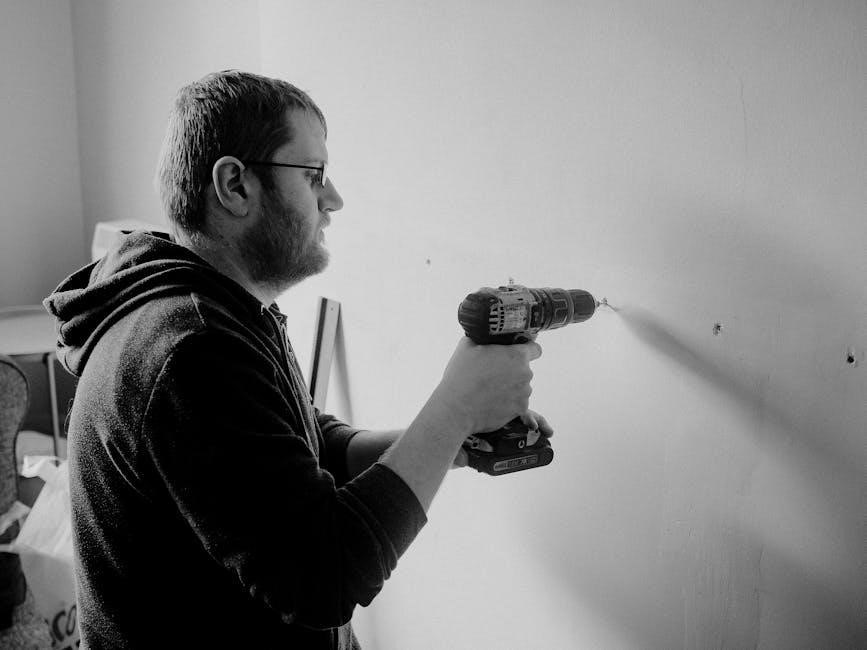
Electrical Connections and Wiring
Proper electrical connections are critical for safe and efficient generator operation. Ensure all wiring meets local codes and is installed by a licensed electrician to prevent hazards.
4.1 Understanding the Electrical System Requirements
Understanding the electrical system requirements ensures compatibility and safety. The Generac 22kW generator operates at 240VAC, requiring a dedicated 60A circuit. Verify the system’s power ratings, voltage, and phase configuration match your home’s electrical panel. Load calculations must account for all connected appliances to avoid overloading. Ensure the generator’s electrical connections comply with local codes and are installed by a licensed electrician. Proper wiring materials and sizing are essential to prevent overheating and ensure efficient performance.
4.2 Wiring and Circuit Breaker Installation
Proper wiring and circuit breaker installation ensure safe and reliable operation. Use the correct gauge wire to handle the 60A circuit, avoiding overheating. Install a dedicated 240V circuit breaker in the main electrical panel, sized appropriately for the generator’s load. Ensure all connections are secure and meet local electrical codes. Grounding the system is critical for safety. Consult a licensed electrician to verify wiring integrity and compliance with regulations. Proper installation prevents electrical hazards and ensures optimal performance.
4.3 Transfer Switch and Load Center Connections
Connect the transfer switch to the load center to ensure seamless power transition during outages. Install the transfer switch near the main electrical panel, following the manufacturer’s instructions. Wire the transfer switch to the generator’s output, ensuring compatibility with the system’s voltage and current ratings. Secure all connections tightly to prevent arcing or power loss. Test the transfer switch operation to confirm proper functionality. Always consult a licensed electrician to ensure compliance with local electrical codes and safe installation practices.
4.4 Grounding and Bonding Requirements
Proper grounding and bonding are critical for safety and system functionality. Install a grounding rod rated for the generator’s capacity, ensuring it meets NEC standards. Connect the rod to the generator’s grounding terminal using a copper conductor. Bond the neutral and grounding conductors at the transfer switch and load center to prevent voltage differences. Verify all connections are secure and free from corrosion. Test the grounding system to ensure resistance is within safe limits. Always follow local electrical codes and consult a licensed electrician for compliance.
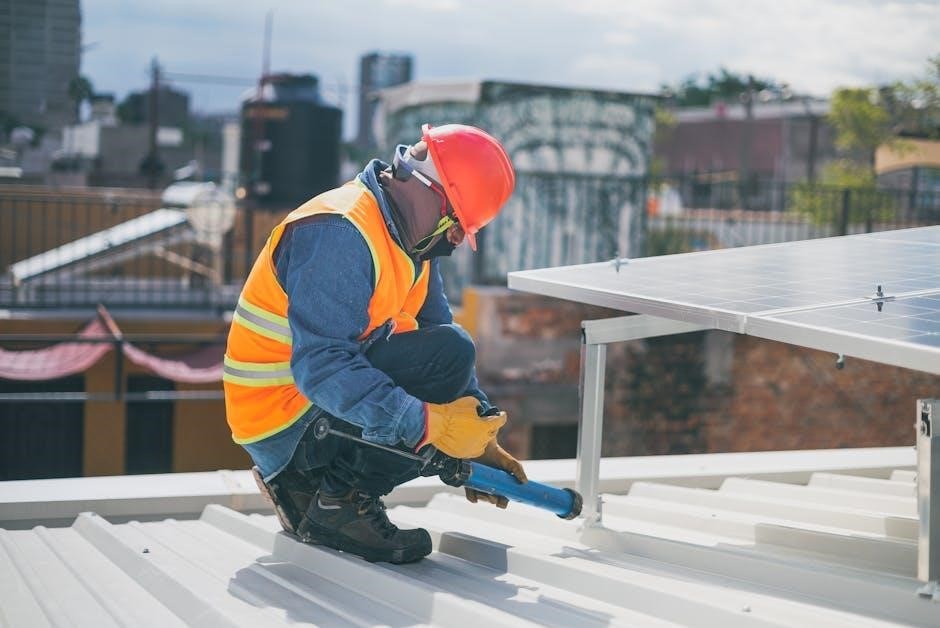
Fuel System Setup and Configuration
Ensure the fuel system is compatible with your generator’s power output and fuel type. Properly install fuel lines, tanks, and ventilation to meet safety standards and local codes. Always follow manufacturer guidelines for configuration and testing to ensure reliable operation and prevent hazards. Test the system under load after installation to confirm functionality and safety.
5.1 Fuel Line Installation and Safety Measures
Install fuel lines according to local regulations and manufacturer guidelines to ensure safe operation. Use approved materials resistant to environmental factors and potential leaks. Route lines away from ignition sources and high-temperature areas. Secure lines properly to prevent damage. Conduct pressure tests before connecting to the generator. Ensure all connections are tight to avoid leaks. Follow safety protocols to prevent accidental ignition or fuel spills. Always turn off the generator before servicing the fuel system to maintain safety standards and prevent hazards during installation or maintenance.
5.2 Tank Requirements and Placement Guidelines
The fuel tank must be specifically designed for use with generators and meet local fire and safety codes. Place the tank on a level, stable surface away from buildings, ignition sources, and high-traffic areas. Ensure the tank is at least 10 feet away from any structure and properly ventilated to prevent fume accumulation. Use UL-certified tanks and follow manufacturer guidelines for size and capacity. The tank should be securely anchored to prevent movement and leakage. Always ensure the tank is within 30 feet of the generator for optimal performance and safety.
5.3 Ventilation and Fuel System Maintenance
Proper ventilation is critical to prevent carbon monoxide buildup and ensure safe operation. Ensure the generator room or area has adequate airflow, with vents or windows that open to the outside. Regularly inspect fuel lines for leaks or damage and replace worn components. Clean or replace fuel filters as recommended by the manufacturer. Check the vent pipe for blockages and ensure it is securely connected. Maintain a clean and dry environment around the fuel system to prevent corrosion and contamination. Refer to the manual for specific maintenance intervals and safety guidelines.

Startup and Initial Testing
This section outlines the steps to safely start the generator and test its operation. Follow the manufacturer’s guidelines for initial activation and performance verification.
6;1 Pre-Startup Checks and Preparations
Before starting the generator, ensure all electrical and fuel connections are secure. Check fluid levels, including oil and coolant, and verify the battery charge. Inspect for any leaks or damage. Ensure the circuit breaker is in the correct position and the area around the generator is clear. Confirm the load center is properly configured and all safety switches are engaged. Review the manual to ensure compliance with startup procedures and safety guidelines. This step is critical for safe and efficient operation. Proper preparation prevents potential hazards and ensures system reliability.
6.2 Initial Startup Procedure
Begin by turning the circuit breaker to the “on” position and ensuring the generator switch is set to “auto.” Allow the system to initialize and perform its self-test. Once the control panel indicates readiness, start the generator and let it run without a load for 10-15 minutes to ensure proper operation. Gradually introduce the load, monitoring the system’s performance. If any issues arise, such as unusual noises or error codes, stop the process and consult the manual or contact a professional. Always follow the manual’s startup guidelines for safe and efficient activation.
6.3 Testing the System Under Load
After initial startup, gradually introduce a controlled load to the system to ensure proper operation under varying conditions. Monitor the generator’s performance, checking for stable voltage, frequency, and power output. Verify that the system can handle the maximum rated load without overheating or malfunctioning. Test all connected circuits and appliances to confirm they function correctly. If any irregularities occur, such as fluctuating power or warning alarms, shut down the system and refer to the troubleshooting guide or contact a certified technician for assistance.
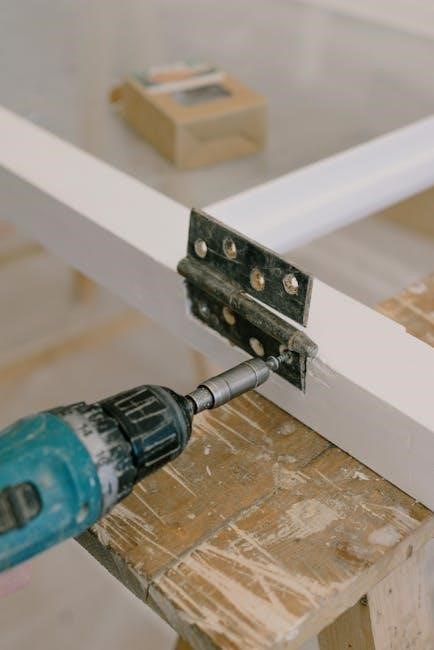
Maintenance and Troubleshooting
Regularly inspect and maintain the generator to ensure optimal performance. Address common issues promptly, and refer to the troubleshooting guide for solutions. Schedule professional servicing annually to maintain warranty validity and system reliability.
7.1 Routine Maintenance Schedule
A routine maintenance schedule is crucial for ensuring the Generac 22kW generator operates efficiently. Perform daily checks on oil and fuel levels, and inspect the air filter weekly. Monthly, check the battery terminals and test the transfer switch. Annually, hire a certified technician for a comprehensive service, including spark plug replacement and coolant inspection. Keep detailed maintenance records to ensure warranty compliance and system reliability. Always follow the manufacturer’s guidelines for specific maintenance intervals and procedures.
7.2 Common Issues and Troubleshooting Tips
Common issues with the Generac 22kW generator often relate to low oil levels, faulty sensors, or electrical connections. If the generator shuts down unexpectedly, check the oil level and ensure it meets the recommended specifications. For sensor-related problems, clean or replace sensors as needed. Dead batteries or loose connections can prevent startup, so inspect and tighten terminals. If the generator runs but doesn’t power the load, verify circuit breakers and ensure the transfer switch is engaged. Addressing these issues promptly can prevent downtime and ensure reliable performance.
7.3 Updating Firmware and Software
Regularly updating the Generac 22kW generator’s firmware and software ensures optimal performance, security, and compatibility. Visit Generac’s official website to check for the latest updates. Download the update file and follow the provided instructions for installation. Use a compatible USB drive or mobile app to transfer the update to the generator’s control panel. Avoid interrupting the update process to prevent system corruption. If unsure, consult a certified technician to ensure a smooth update. Keeping the system up-to-date enhances functionality and reliability.

Warranty and Customer Support
Generac offers a comprehensive warranty program for the 22kW generator, covering parts and labor for up to five years. Register your product online to activate warranty benefits. For assistance, contact Generac’s customer support team via phone, email, or live chat. Visit their website for troubleshooting guides, FAQs, and a dealer locator to find authorized service providers near you.
8.1 Warranty Coverage and Terms
The Generac 22kW generator is backed by a comprehensive warranty program, offering coverage for parts and labor up to five years. Proper registration is required to activate the warranty benefits. The warranty terms outline specific conditions that must be met to maintain coverage, such as regular routine maintenance and adherence to installation guidelines. Any unauthorized modifications or failure to meet these conditions may void the warranty. It’s essential to review and comply with all terms to ensure full protection of your investment.
8.2 Contacting Generac Customer Service
Generac provides multiple avenues for customer support to address inquiries and concerns. Customers can reach out via phone, email, or live chat through the official Generac website. The website also features a “Support” section with FAQs, troubleshooting guides, and downloadable resources. For urgent issues, 24/7 customer service is available to ensure prompt assistance. Additionally, users can locate authorized service dealers through the Generac dealer locator tool, ensuring professional help is accessible when needed.
8.3 Finding Authorized Service Dealers
To ensure proper installation and maintenance, Generac recommends using authorized service dealers. These dealers are certified and trained to handle Generac systems. Visit the Generac website and use the “Dealer Locator” tool to find authorized dealers in your area. Enter your ZIP code to receive a list of nearby service providers. Additionally, you can contact Generac customer service for recommendations or verify a dealer’s authorization status by checking for the Generac Certified Dealer logo on their website or premises.
The Generac 22kW installation process, when completed correctly, ensures reliable backup power. Always adhere to the manual’s guidelines for optimal performance, safety, and longevity of the system.
9.1 Final Checklist for a Successful Installation
- Confirm all electrical connections are secure and meet local codes.
- Verify fuel lines are properly installed and leak-free.
- Ensure the generator is level and securely anchored.
- Check that the transfer switch is correctly configured.
- Validate proper ventilation and combustion air supply.
- Test the system under load to ensure full functionality.
- Review and complete all safety and startup procedures.
- Document the installation for future reference and maintenance.
This checklist ensures a safe and efficient installation process.
9.2 Ongoing System Monitoring and Optimization
Regular monitoring ensures optimal performance and longevity of your Generac 22kW system. Schedule routine inspections to check for wear and tear, and monitor performance metrics like power output and fuel efficiency. Adjust settings as needed to maintain efficiency and reliability. Keep the system clean and free from debris. Regularly update firmware to access new features and improvements. Consider investing in remote monitoring solutions for real-time insights. This proactive approach ensures your generator remains a trusted power source for years to come.